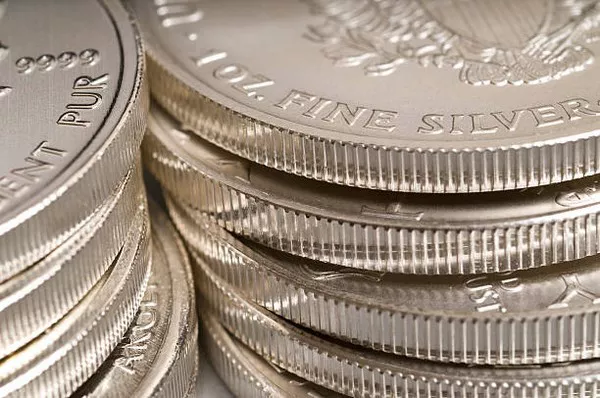Sterling silver has long been cherished for its timeless beauty and durability in jewelry craftsmanship. If you’re a jewelry enthusiast or simply want to ensure that you’re getting your money’s worth when purchasing earrings, it’s crucial to know how to distinguish genuine sterling silver from imitations or other materials. In this comprehensive guide, we’ll explore various methods to help you determine whether an earring is made of authentic sterling silver.
Understanding Sterling Silver
Before delving into the identification methods, it’s essential to understand what sterling silver is and why it’s so highly regarded in the world of jewelry.
Sterling silver is an alloy consisting of 92.5% pure silver and 7.5% of other metals, typically copper. This combination enhances the durability and strength of the metal while preserving the radiant appearance of silver. The resulting material is known for its remarkable luster and ability to withstand everyday wear and tear, making it a popular choice for crafting fine jewelry.
Hallmark or Stamps
One of the most straightforward ways to identify genuine sterling silver earrings is by examining any hallmarks or stamps on the earrings. Sterling silver jewelry often carries specific marks or symbols that indicate its authenticity. These marks serve as a guarantee of quality and can provide valuable information about the piece. Here are some common marks you might encounter:
“925” or “92.5”: This stamp signifies that the jewelry is made of 92.5% pure silver, which is the hallmark of sterling silver.
“Sterling” or “Ster”: The words “sterling” or “ster” may be imprinted on the jewelry, confirming its sterling silver composition.
Maker’s Mark: Some pieces of sterling silver jewelry include a maker’s mark, which identifies the manufacturer or designer of the piece.
Country of Origin: In some cases, you may find a stamp indicating the country of origin, especially if the earrings were made in a region known for its silver craftsmanship.
These markings are typically found on the back of earrings, posts, or clasps. Be sure to use a magnifying glass if necessary to get a closer look, as some marks may be small and discreet.
Magnet Test
While not foolproof, the magnet test can be a useful preliminary method to check for the authenticity of sterling silver earrings. Silver is not magnetic, so if a magnet is attracted to your earrings, it’s a clear sign that they are not genuine sterling silver. However, keep in mind that this test cannot distinguish between sterling silver and other non-magnetic materials, so it’s best used in conjunction with other methods.
Tarnish and Patina
One of the distinctive characteristics of sterling silver is its tendency to tarnish over time due to exposure to air and moisture. Authentic sterling silver earrings will develop a dark patina or tarnish on their surface, giving them an antique, slightly oxidized appearance. This patina can vary in color from light yellow to deep black.
To check for tarnish, examine the earrings for areas that have darkened or dulled over time. If you notice a tarnished patina, it’s a positive indication that the earrings are made of genuine sterling silver. Keep in mind that some manufacturers may intentionally add patina to mimic the aged look, so this method should be used in conjunction with others for a more accurate assessment.
Acid Test
The acid test is a more advanced method that requires caution and care. It involves applying a small amount of nitric acid or silver testing solution to a discreet spot on the earrings. Be sure to wear gloves and protective eyewear when performing this test.
To conduct the acid test:
a. Select a hidden or inconspicuous area of the earring, such as the back of the post.
b. Place a drop of the testing solution on the chosen spot.
c. Observe the reaction: If the solution turns a milky color or a greenish color, it indicates that the earrings are not sterling silver. Genuine sterling silver should produce little to no reaction with the testing solution.
It’s important to exercise caution when using the acid test and avoid contact with your skin or eyes. Additionally, only use this method as a last resort when other methods have failed to provide a clear answer.
Professional Appraisal
When in doubt or if you have valuable or sentimental sterling silver earrings, it’s advisable to seek the expertise of a professional jeweler or appraiser. They have the knowledge, experience, and specialized tools to accurately assess the authenticity and value of your earrings. A professional appraisal can also provide you with documentation that may be useful for insurance purposes.
Conclusion
Identifying genuine sterling silver earrings is an essential skill for jewelry enthusiasts and buyers alike. By examining hallmarks or stamps, conducting the magnet test, observing tarnish and patina, and, if necessary, performing the acid test or seeking a professional appraisal, you can confidently determine whether your earrings are made of authentic sterling silver. Remember that the presence of a hallmark is the most reliable indicator of sterling silver authenticity, but it should be considered alongside other methods for a comprehensive assessment. With these techniques at your disposal, you can ensure that your sterling silver earrings remain a cherished and enduring part of your jewelry collection.


